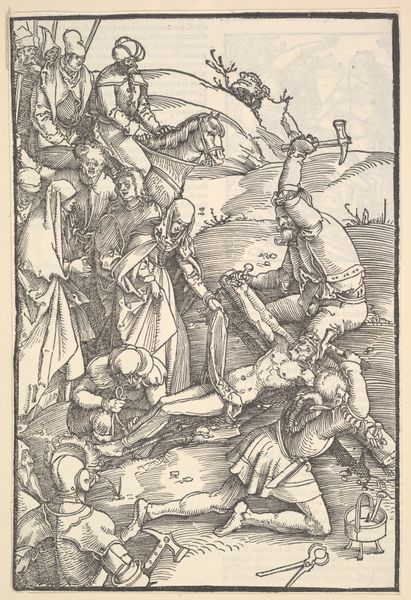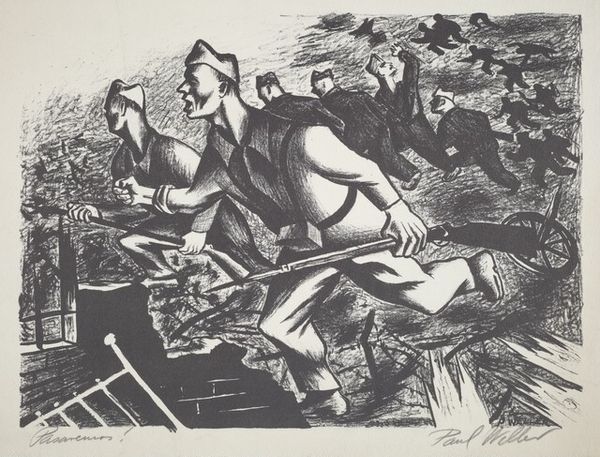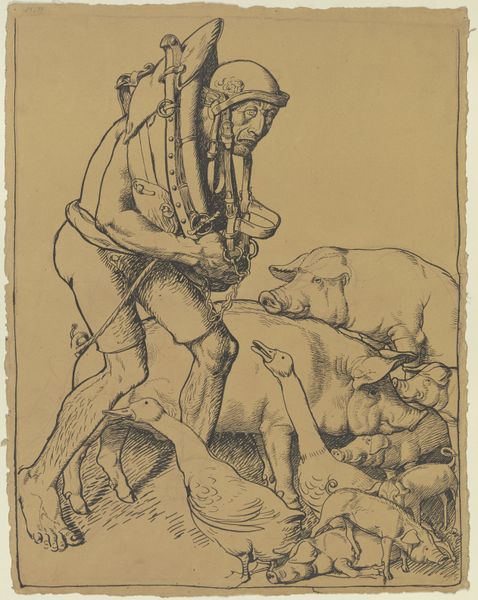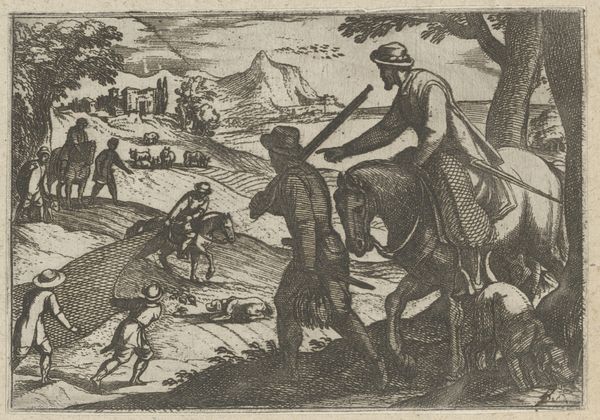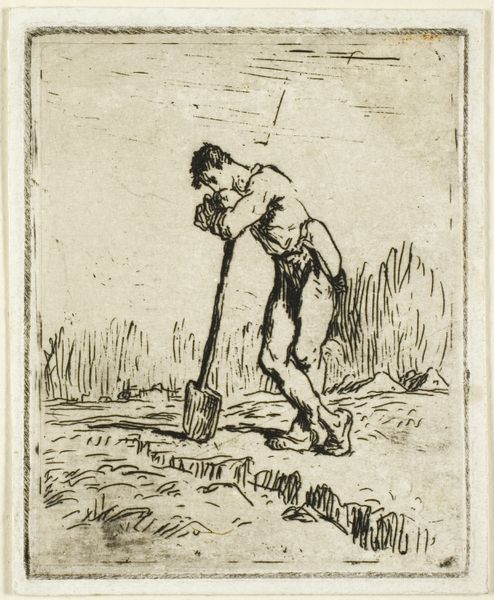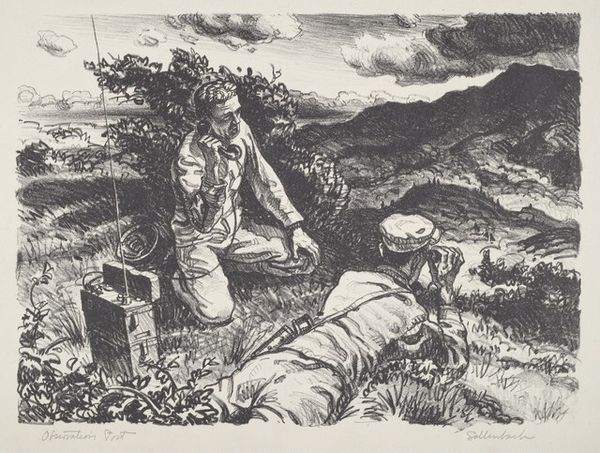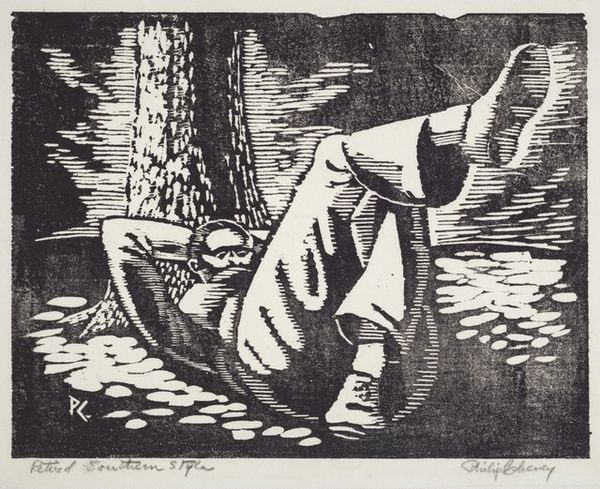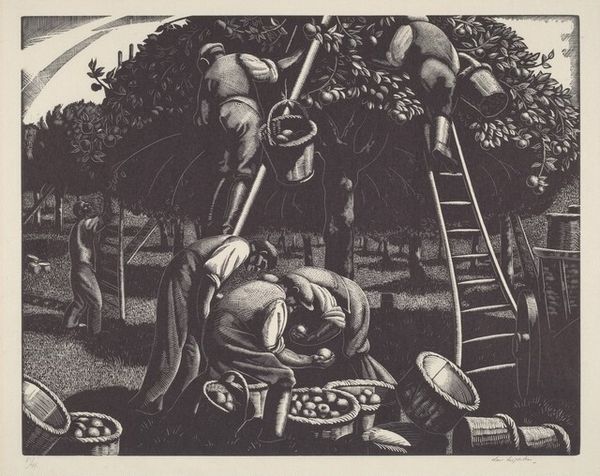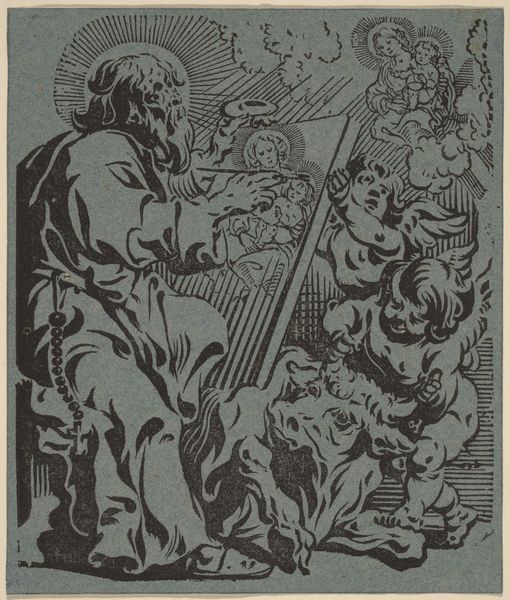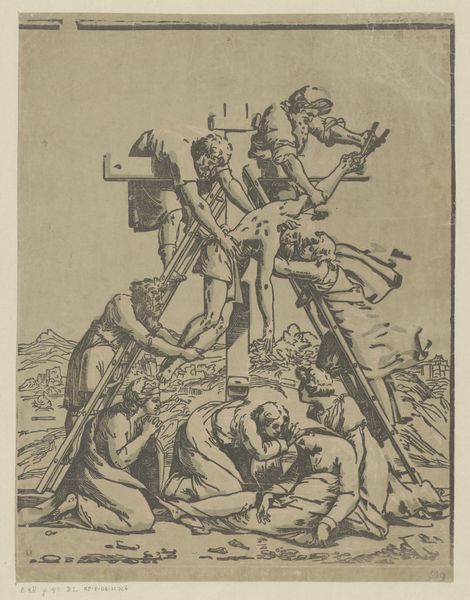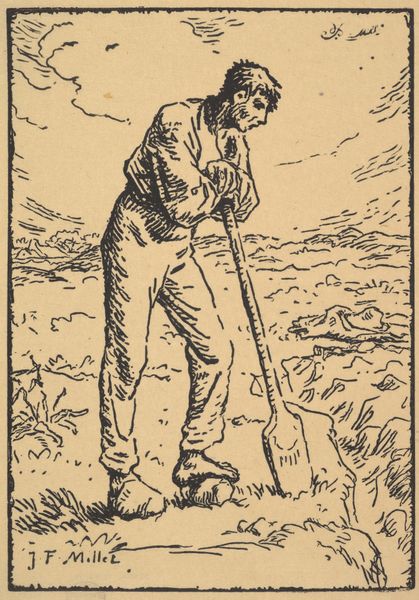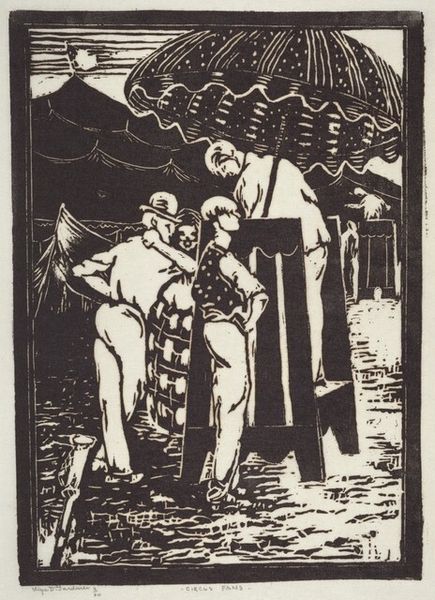
Dimensions: 342 × 252 mm (image/plate); 409 × 307 mm (sheet)
Copyright: Public Domain
Curator: Standing before us is "Shrimpers," a print crafted around 1895 by Auguste-Louis Lepère. He employed woodcut and lithographic techniques on paper to achieve this compelling image. Editor: My initial reaction is to the dynamism and the density. The foreground teems with the detailed chaos of the shrimpers’ tools and catch, contrasting beautifully with the tranquil, almost sparse background. Curator: Precisely. Lepère was clearly influenced by the Japanese Ukiyo-e tradition, simplifying forms and using bold outlines. The reduction of tonal variation focuses our attention on the composition. The high horizon line and the cropping of the figures push the viewer directly into the scene. Editor: That conscious composition creates a potent sense of immediacy. Looking closer, there’s an inherent tension in the figuration; the straining posture of the shrimper hauling the nets versus the almost stoic stance of the figure punting the boat. The former feels trapped by the inescapable demands of his labor. Curator: One might also consider the societal implications embedded here. The portrayal, while seemingly objective, offers a glimpse into the lives of working-class individuals at the turn of the century. How they grapple with both the promise and the difficulty in navigating life’s currents. It is interesting, this choice to monumentalize an occupation which would ordinarily have gone unnoticed. Editor: I can certainly see the deliberate, artful arrangement. However, despite its narrative, my eye is caught by the rhythm within those lines, in the ways light finds openings even amongst the darkness. Curator: Your perspective emphasizes the very structure that provides stability to the human narrative presented to us. Editor: And I think it underlines how Lepère creates meaning from both angles – it is simultaneously narrative and structured, neither one more meaningful than the other. Curator: Indeed, the artwork beautifully juxtaposes visual form and its historical milieu. Editor: It certainly gives pause to consider how technical virtuosity marries to socio-historical context and human concerns to generate this moving picture of a small, shared corner of time.
Comments
No comments
Be the first to comment and join the conversation on the ultimate creative platform.

